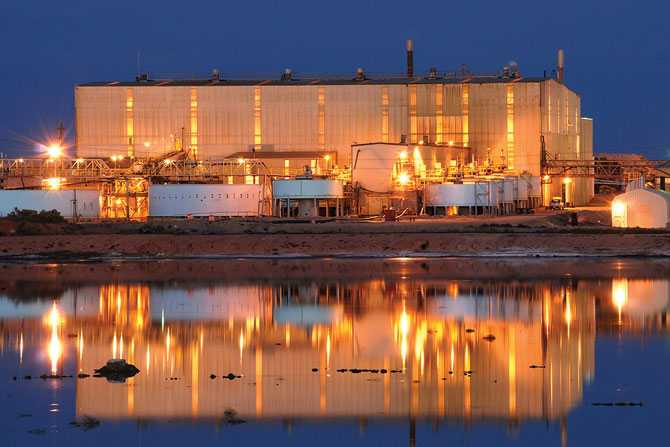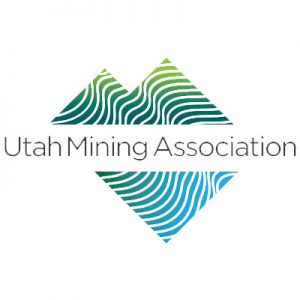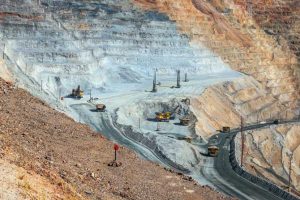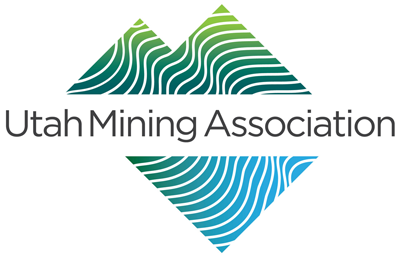By Utah Mining Association

Energy Fuels, and particularly our White Mesa Mill, is one of the best untold clean energy stories in the U.S. today. The U.S. uranium reserve can help revive domestic uranium production while also accelerating other important initiatives that play a part in making the world a cleaner and healthier place. Our White Mesa Mill in Utah is a clean energy and critical minerals hub, a concept that goes much farther than simply mining and producing uranium.
Tell us a little about the company.
We are based in Denver, and we have operations across the western United States. Our flagship operation is the White Mesa Mill in San Juan County, Utah, a few miles south of Blanding. The White Mesa Mill is the focus for our company, as we are in the process of turning it into America’s clean energy and critical mineral hub through our uranium, rare earths, vanadium and recycling activities. Let me explain.
The White Mesa Mill is the only conventional uranium mill in the U.S. today and one of the largest U.S. producers of this critical mineral for many years. Uranium, of course, is the fuel for nuclear energy, which provides 20% of all U.S. electricity — and 55% of all carbon-free electricity — generated in the U.S. The mill also has the ability to produce vanadium, and it was the largest U.S. producer of this critical mineral in 2019. Vanadium is used in steel, aerospace, chemicals, and emerging grid-scale battery technologies.
But here’s the really exciting part; in the last year, we’ve discovered a significant new opportunity at the mill, perhaps the biggest opportunity in the history of the White Mesa Mill and perhaps even San Juan County, Utah. Our core business is, of course, uranium. But it turns out that one of the highest-value rare earth minerals in the world, monazite, also contains significant quantities of uranium. The uranium must be removed from monazite ore before it can be further processed for rare earths. This is where we fit in. We have a long history of responsibly handling and recovering uranium from a variety of feeds. So, we are in the perfect position to process monazite ore for the recovery of rare earths and uranium from monazite. In fact, we have been told that we might be the “missing link” in bringing rare earth production back to the U.S.
We are already processing monazite ore at the mill on a pilot scale and producing an on-spec intermediate rare earth product. We expect to reach commercial levels of production equal to close to 10% of U.S. rare earth demand in 2021. In fact, we are more advanced than any other company in the U.S. in bringing the rare earth supply chain back to the U.S. And it’s happening here in southeast Utah.
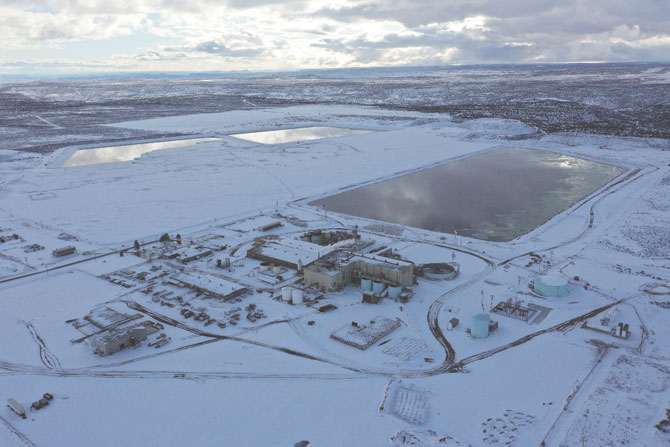
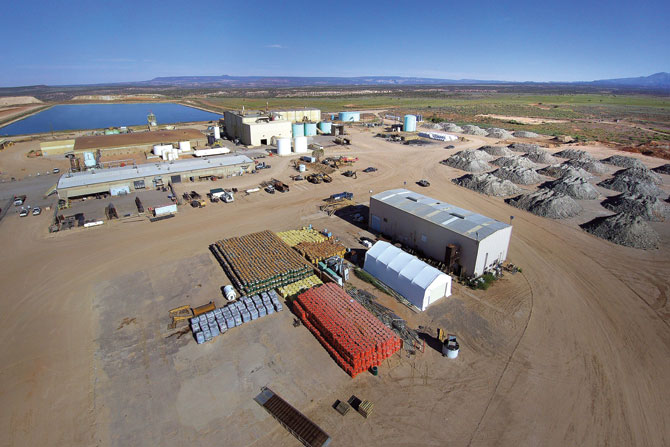
Has your business focus shifted completely to rare earth mineral processing?
Not at this point. Our focus is uranium, and we also produce vanadium and do uranium and vanadium recycling. But because of our expertise and experience with uranium, we are better suited than any other U.S. company to be on the front lines of bringing rare earth processing back to the United States.
Monazite ore is currently being mined in Georgia at heavy mineral sand operations owned by The Chemours Company, which was spun off from DuPont in 2015. Monazite is also mined in Australia, South America and Africa. These miners typically sell their monazite to China, which recognizes the extremely high value of this mineral. Chinese companies process it and make rare earth products that they export to the United States — and the rest of the world — as manufactured products like electric vehicles, wind turbines, electric motors, cell phones, computers, flat-panel displays, advanced optics, and the like. Their ability to process rare earth minerals like monazite is part of the reason that China controls 80%-90% of the world’s supply of rare earths.
Energy Fuels will never supplant China in rare earths, nor do we aspire to. However, we believe we can create a low-cost U.S. supplier of rare earths, with production that is much more environmentally and socially responsible than China.
What are rare earth minerals?
Rare earth minerals are a series of 17 elements on the periodic table that are used in a variety of clean energy and advanced technologies. Rare earth minerals can be found in cell phones, electric vehicles, electric motors, flat panel displays, medical equipment and military applications, from missile guidance to advance optics. For instance, an F-35 fighter jet uses nearly 1,000 pounds of rare earth minerals in its construction. However, we produce no intermediate or end use rare earth products in the U.S. now, which is a major concern, in particular for the U.S. military.
Will the operation in Blanding only process monazite for rare earths?
We expect to mainly process monazite. It’s one of the most coveted rare earth bearing minerals in the world, with excellent distributions of the highest-value individual rare earth elements, like neodymium and praseodymium used in permanent magnets, and “heavy” rare earths used in various specialty applications. We are mainly focused on processing monazite because it contains uranium at concentrations similar to the typical western U.S. mine and very high concentrations of recoverable rare earths.
There are five steps involved in processing monazite to produce rare earths. First, the monazite ore needs to be mined. The next step is to recover the uranium and other radionuclides and produce a clean rare earth concentrate — this is where we come in. Next comes rare earth separation, where you produce individual rare earth oxides. Then, you go to metal-making and alloying, and finally magnet and other end-use manufacturing.
We have a distinct advantage over other U.S. producers because we’re utilizing existing production and facilities for the first steps. This means we can save many years of licensing and construction, and hundreds of millions of dollars of capital, versus other domestic rare earth proposals trying to get off the ground. Step 1 is already happening in Georgia and elsewhere. We are about to start step 2 at the White Mesa Mill. Steps 3-5 need to be constructed, but we think we can also install those capabilities at the White Mesa Mill very economically and quickly in the coming years.
We think we can be lower cost than any other non-Chinese sources of rare earths, and possibly cost-competitive with China, because we will be producing rare earths from high-value monazite at existing facilities.
Incidentally, monazite also contains some thorium. We’ve already been contacted by folks in the pharmaceutical industry interested in thorium for advanced cancer treatments. It’s very early days, but this is yet another potential social benefit of our rare earth production.
How far into processing monazite are you?
So far, we have processed four metric tonnes of Chemours monazite at the White Mesa Mill — and we’re very pleased with the results. We are scheduled to start commercial production of a mixed rare earth carbonate later this quarter.
At that time, we will have restored step 2 back to the U.S. However, the U.S. doesn’t yet have steps 3, 4 and 5. So, for the next couple of years, we expect to sell our intermediate rare earth product to separation facilities elsewhere in the world, likely Europe. However, as mentioned above, we are working on incorporating those next steps into the White Mesa Mill.
Before you came on the scene, where was U.S. monazite going?
In the past, Chemours put their monazite on a train from Georgia to a port on the West Coast, put it on a ship, and sold it to China. Now, we’re buying it and processing it, making sure this valuable rare earth resource stays in the U.S. As mentioned above, our product will likely leave the U.S. while separation and other downstream processing is developed in the U.S. over the next couple of years. But this will just be a bridge for us. We want to keep these rare earths mainly in the U.S., including for high-tech manufacturers in Utah.
We are initially purchasing a minimum of 2,500 tons of monazite ore per year from Chemours. This ore contains roughly 55% total rare earths and 0.20% uranium. Amazingly, close to ten percent of U.S. rare earth demand is contained in this small quantity of monazite. A little bit truly goes a long way, and because over 50% of the ore contains recoverable product, very little waste is generated compared to traditional uranium mining. Incidentally, monazite also contains some thorium. We’ve already been contacted by folks in the pharmaceutical industry interested in thorium for advanced cancer treatments. It’s very early days, but this is yet another potential social benefit of our rare earth production.
Restoring domestic rare earth capabilities is a bipartisan goal. It is unacceptable to both Democrats and Republicans that we are so dependent on China for rare earths. The White Mesa Mill can produce rare earths in a safer, cleaner, and more environmentally sound manner than anyone else in the world. Any company concerned about environmental and social responsibility needs to be concerned about their supply chains. We think we will solve this issue in rare earths.
What are your future plans for White Mesa Mill?
Well, we’re ramping up commercial production of rare earths and uranium from monazite in the next few months. And, in the next two to three years, we plan on implementing a fully integrated rare earth supply chain, including separation and other downstream rare earth manufacturing.
We’ll be adding 12-15 good jobs this year at the White Mesa Mill. If we are successful with our future plans, we think we can create more than 100 clean tech jobs in San Juan County, Utah. This will be an array of good-paying jobs with benefits, from technical positions to those requiring advanced degrees.
As I mentioned above, we are turning southeast Utah into America’s clean energy and critical mineral hub. We already produce uranium, which is used for the production of emission-free electricity. We also produce vanadium, which has applications in construction, aerospace and grid-scale batteries to store renewable energy. We are helping to clean up the legacy of Cold War era, government-sponsored uranium mining. We recycle uranium and vanadium, which reduces the need for mining and helps address climate change. And now, we are close to bringing rare earth production back to the U.S.
Energy Fuels and our White Mesa Mill in Utah might be the most exciting clean energy story in the U.S. today.



